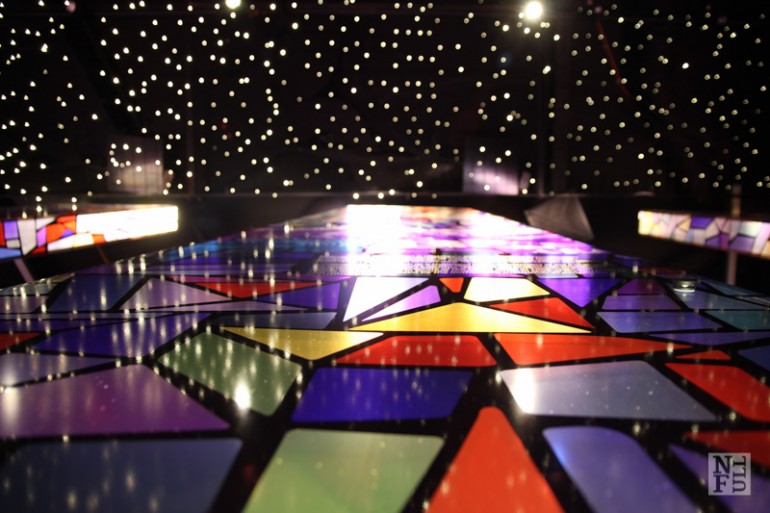This is a very particular museum. It has been recently opened to public and it has already gained a ‘must see’ label. I have heard enough enthusiastic comments on it to plan a visit as soon as possible. Just last week I hosted few Italian friends and it seemed a perfect excuse to finally go there. Due to heavy rain and cold weather it was an awesome idea to spend our afternoon.
What this is all about?
Porta Posnania (pl. Brama Poznania) is an innovative museum focused on the beginning of settlement in the area currently occupied by city of Poznan. Using the most recent electronic gadgets it takes you for a journey into deep past of the place. Basic on the artifacts found and using most recent scientific research the exhibition has an ambitious aim of familiarizing the visitors with the ancient history of Poland.
The location and a building itself – a sharp modern concrete cube – is impressive. Not only it occupies space that it further reveals in front of your eyes but also participate in revitalization of long neglected area: Śródka. The cube located at the eastern bank of Warta river is connected with the oldest part of the city: Ostrów Tumski (a island where cathedral is located). The museum located on the island hosts few exhibition rooms where currently a modest display of photos takes place (pl. Śluza Katedralna). One of the photos’ authors is Erik an owner of a charming little cafe in the city center. Through a glass and stain covered bridge you enter the building and it really makes a great impression. If you are fan of modern architecture you will appreciate it.
What to expect?
Right at the entrance a large hall with all facilities welcomes you. After a ticket purchase you get a small electronic pocket guide with headphones with a short explanation on how to use it. Here, your adventure begins. What I like the most about these little devices was that after entering exhibition rooms it automatically gives you an overview. What my Italian friends did not like was lack of the italian language version (still, german, french and spanish seems handy).
The interior of the museum is kept in black colors. There are no windows along the whole itinerary apart of the glass corridor that splits the building to two halves. I think it all helps to keep the visitors’ attention on information given. So far, so good. There are four basic parts of the exhibition focused on particular events chronologically. What is missing, I think, is a consistent narrative along the way. There are tens of designated sites where by clicking on your device you get more information about a particular artifact, building, event, etc. It is however not shown how to proceed. Picking the spots randomly you might find yourself in a chaos.
Likes and dislikes
Most of all this museum is like no other. Heavy usage of modern technologies makes the ancient history alive. A variety of multimedia including videos showing reconstructed workshops, settlement and fortification is impressive. Also, an itinerary dedicated for the kids and a room with child friendly objects is really nice. One of the best features in my opinion are displays showing important parallel events from all over the world. It was something that was always missing at the history lessons. Impressive illumination of particular elements was also eye catching.
Although the whole experience is intriguing there are some things I did not like. Scattered narrative is one of the things that lowers the educational value of this place. You can go through the exhibition and still do not have a clue on the Poznan and Polish history. Perhaps the particular spots that contain important information should be highlighted. A distinction among basic facts, important elements of narrative and short anecdotes might be a good idea.
This museum is a prove that even the most ancient history can be exhibited in an attractive way. I am pretty sure that being so modern is a huge advantage. It meets the tourists’ expectations, I think. Also a modern building in this very special place will hopefully melt in the area providing valuable meetings with art and culture. I will be looking at its activity and events organized throughout a year.
A nearby area of Śródka has already experienced side effects of the recent construction of a bridge for pedestrians and the museum opening. There are at least three new coffee shops and restaurants along the street stretching from the museum towards Malta artificial lake. Few years ago it would be useless to open a cafe here but now it seemed a great idea. My favorite one is called Cafe La Ruina and I took my Italian friends there. Apart of brilliant interior design and board games to play they offer amazingly good home made cakes. The best conclusion of our itinerary!
Disclosure: this post was kindly supported by City of Poznan, however, all opinions are my own and not influenced in any way.






